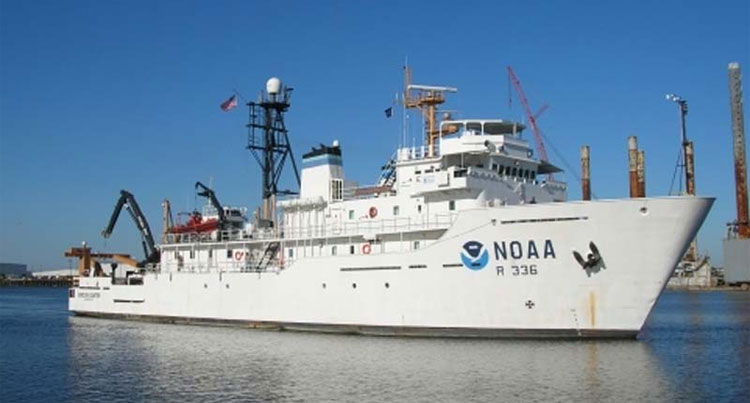News - Austria
NOAA's Teacher at Sea Program - Call for Applicants
ARE YOU AN EDUCATOR INTERESTED IN DOING RESEARCH ON A SHIP?
If so, we encourage you to explore the opportunities offered by the National Oceanic and Atmospheric Administration's (NOAA) Teacher at Sea Program, accepting applications October 1-31, 2013. For further information and to preview a sample application visit: http://teacheratsea.noaa.gov/

ABOUT NOAA's TEACHER AT SEA PROGRAM
The mission of NOAA's Teacher at Sea program is to provide teachers a hands-on, research experience at sea, giving them unique insight into oceanographic, hydrographic, and fisheries research by facilitating partnerships between educators and world-renowned NOAA Scientists.
Since 1990, NOAA's Teacher at Sea Program has enabled over 600 teachers to gain first-hand experience of science and life at sea by working on research ships. Teachers have enriched their classroom curricula with a depth of understanding made possible by living and working side-by-side, day and night, with those who contribute to the world's body of scientific knowledge. No matter which type of cruise our teachers embark on, they are bound to learn an array of new things.
APPLICATION DEADLINE
Thursday, 31 October 2013, 5:00 p.m. Eastern Time
Application Deadline Including Letters of Recommendation: Thursday, 31 October 2013, 5:00 p.m. EST.
To Apply: http://teacheratsea.noaa.gov/about/how_to_apply.html
ELIGIBILITY
NOAA's Teacher at Sea program accepts applications from currently employed, full-time educators in these categories: K-12 teachers and administrators; community college, college, and university teachers; museum and aquarium educators; and adult education teachers. We regret that we cannot accept applications from part-time, substitute, or pre-service teachers. Teachers will be selected to fill approximately 25-30 openings available per appropriation.
Note: Non-U.S. citizens may apply to the program. If accepted, the participant will be required to go through a clearance process in order to be able to sail.
TYPES OF CRUISES
Participants are assigned a cruise aboard one of NOAA's 17 ships (or a chartered partner ship). NOAA conducts three main types of cruises. Fisheries research ships perform biological and physical science studies in support of fisheries research. Oceanographic and atmospheric research ships perform physical science studies in support of scientific studies to increase our understanding of the world's oceans and climate. Hydrographic survey ships scan the coastal sea floor with side-scan sonar and sophisticated bottom sounding systems to locate submerged obstructions and navigational hazards for the creation or update of the nation's nautical charts.
TIME COMMITMENT
Participants can expect to be at sea anywhere from one week to one month, with the average cruise lasting 12-14 days. Most of our participants try to sail on cruises offered during the summer vacation, but cruises take place throughout most of the year on a space-available basis.
COSTS
All necessary travel costs associated with teacher participation in the program are covered by the program, including transportation to and from the ship, lodging, and per diem allowance. While airfare is paid for up front by the government, all other costs are reimbursed, including non-airfare transportation costs, lodging, and per diem allowance.
ADDITIONAL INFORMATION
More information about NOAA's Teacher at Sea Program including eligibility requirements, expectations, and frequently asked questions, is available at http://teacheratsea.noaa.gov
News origin: GLOBE Implementation Office





